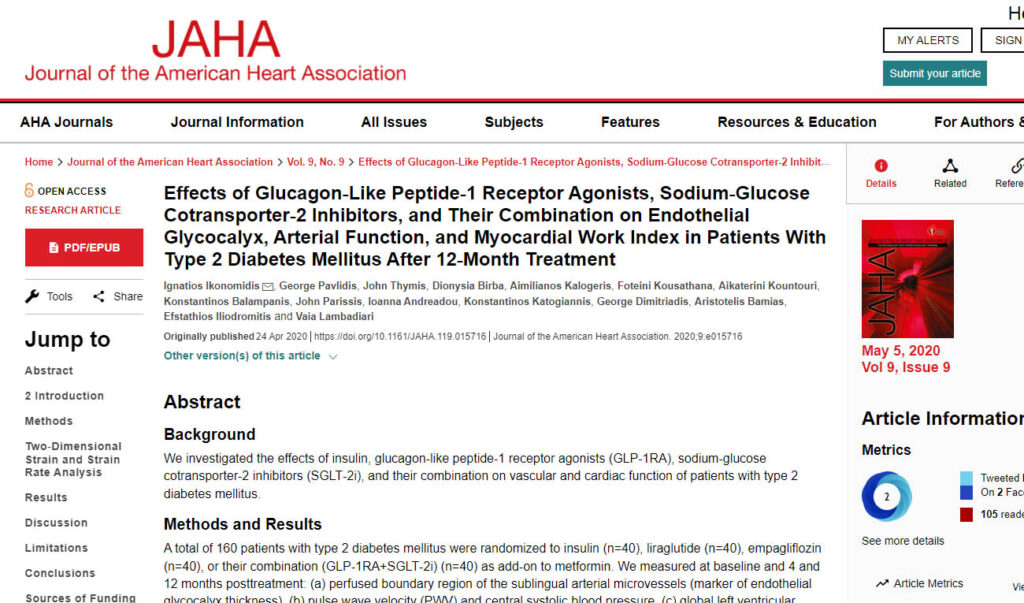Abstract
Background
We investigated the effects of insulin, glucagon‐like peptide‐1 receptor agonists (GLP‐1RA), sodium‐glucose cotransporter‐2 inhibitors (SGLT‐2i), and their combination on vascular and cardiac function of patients with type 2 diabetes mellitus.
Methods and Results
A total of 160 patients with type 2 diabetes mellitus were randomized to insulin (n=40), liraglutide (n=40), empagliflozin (n=40), or their combination (GLP‐1RA+SGLT‐2i) (n=40) as add‐on to metformin. We measured at baseline and 4 and 12 months posttreatment: (a) perfused boundary region of the sublingual arterial microvessels (marker of endothelial glycocalyx thickness), (b) pulse wave velocity (PWV) and central systolic blood pressure, (c) global left ventricular longitudinal, circumferential, and radial strain, (d) myocardial work index (global work index) derived by pressure‐myocardial strain loops using speckle tracking imaging. Twelve months posttreatment, all patients improved perfused boundary region, PWV, global longitudinal strain, global circumferential strain, and global radial strain (P<0.05). GLP‐1RA, SGLT‐2i, and their combination showed a greater reduction of perfused boundary region, PWV, and central systolic blood pressure than insulin, despite a similar glycosylated hemoglobin reduction (P<0.05). GLP‐1RA or GLP‐1RA+SGLT‐2i provided a greater increase of global work index (12.7% and 17.4%) compared with insulin or SGLT‐2i (3.1% and 2%). SGLT‐2i or GLP‐1RA and SGLT‐2i showed a greater decrease of PWV (10.1% and 13%) and central and brachial systolic blood pressure than insulin or GLP‐1RA (PWV, 3.6% and 8.6%) (P<0.05 for all comparisons). The dual therapy showed the greatest effect on measured markers in patients with left ventricular ejection fraction <55% (P<0.05).
Conclusions
Twelve‐month treatment with GLP‐1RA, SGLT‐2i, and their combination showed a greater improvement of vascular markers and effective cardiac work than insulin treatment in type 2 diabetes mellitus. The combined therapy as second line was superior to either insulin or GLP‐1RA and SGLT‐2i separately.


